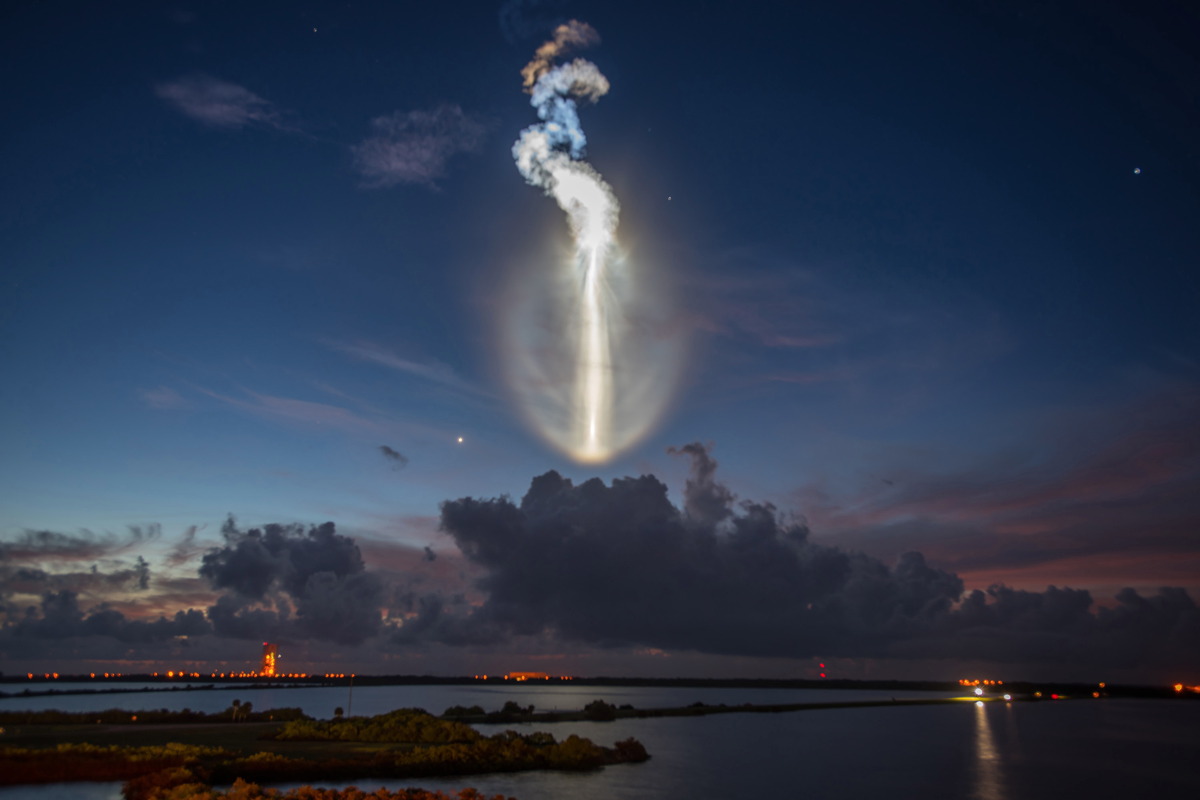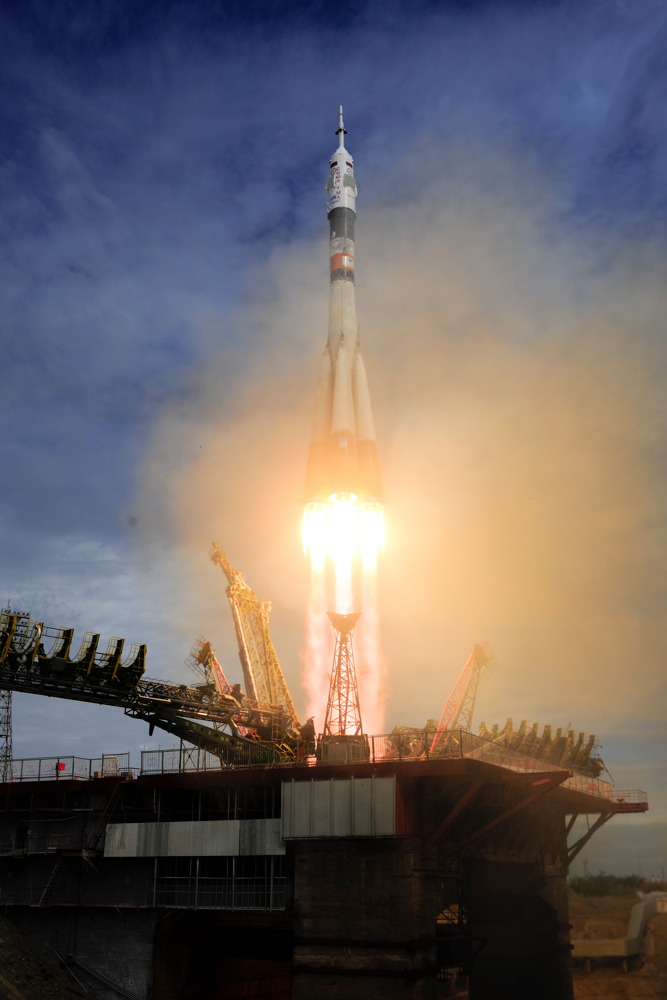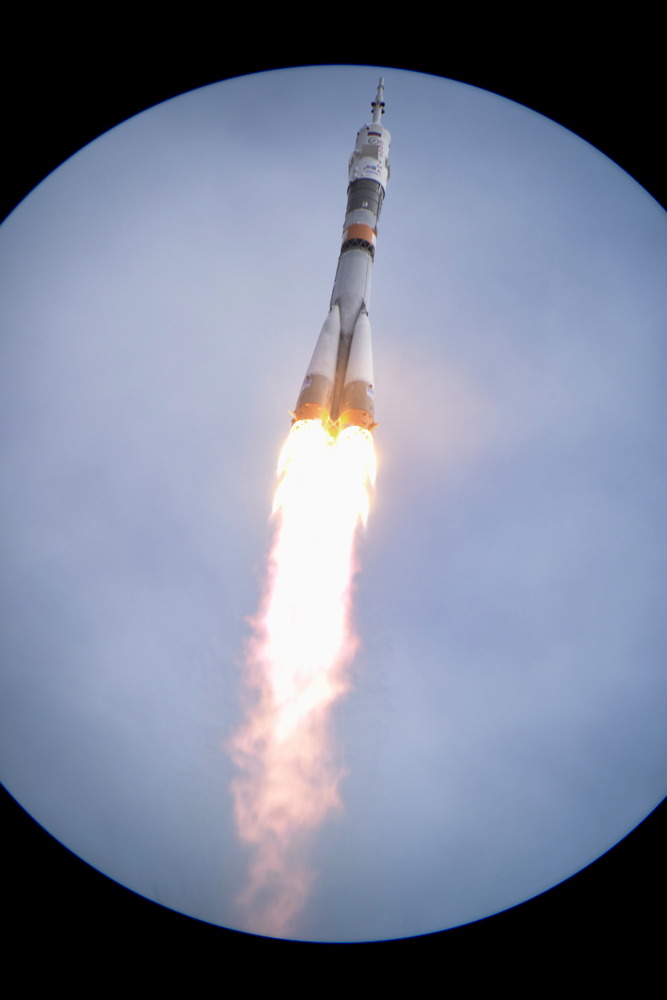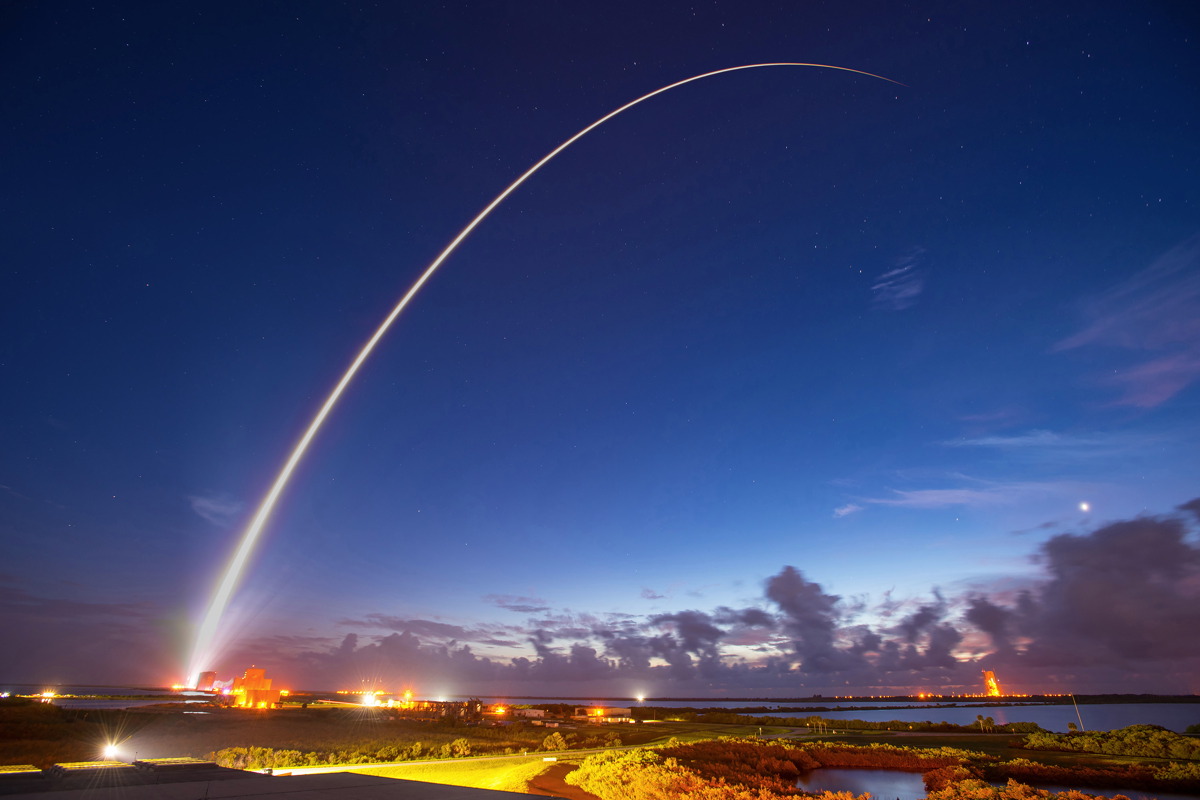Powerful Rocket Launches Light Up the Skies Just Hours Apart (Photos)

Early this morning, in a double display of sheer power and explosive force, two rockets thousands of miles apart blasted off toward space within 6 hours of each other.
Just before dawn today (Sept. 2), a United Launch Alliance Atlas V rocket lifted off from Florida's Cape Canaveral Air Force Station carrying a military communications satellite. The rocket's fiery tail reflected the light coming from below the horizon, creating the illusion of a glowing orb hanging over the water. The fantastic sight was captured in the photograph above.
Earlier in the day (12:37 a.m. EDT (0437 GMT), a Russian Soyuz rocket blasted off from the Baikonur Cosmodrome in Kazakhstan carrying three human passengers headed for the International Space Station.
Photographs of the Soyuz rocket taking off show the enormous trail of fire that propelled the rocket skyward. The arrival of the three spaceflyers at the orbiting laboratory early Friday morning (Sept. 4) will bring the total crew count to nine. There have not been that many crewmembers on the station at once since November 2013, according to NASA.

The Soyuz spacecraft is carrying cosmonaut Sergey Volkov; Denmark's first astronaut, Andreas Mogensen of the European Space Agency (ESA); and Kazakhstan's Aidyn Aimbetov. After launch, the three astronauts radioed a status update down to mission control, saying, "Everything is in order on board."
The Atlas V rocket that took off from Cape Canaveral carried the fourth satellite in the U.S. Navy's MUOS communications network. The satellite system "works like a smartphone network in space," according to a statement from the Navy, and will be used by military personnel around the world. The satellites are built by Lockheed Martin.

The Atlas V left the ground at 6:18 a.m. EDT (1018 GMT), and the light of the rocket leaving Earth made a spectacular sight against the backdrop of a predawn sky. The first three MUOS satellites launched in 2012, 2013 and 2015.
Get the Space.com Newsletter
Breaking space news, the latest updates on rocket launches, skywatching events and more!

Follow Calla Cofield @callacofield. Follow us @Spacedotcom, Facebook and Google+. Original article on Space.com.
Join our Space Forums to keep talking space on the latest missions, night sky and more! And if you have a news tip, correction or comment, let us know at: community@space.com.

Calla Cofield joined Space.com's crew in October 2014. She enjoys writing about black holes, exploding stars, ripples in space-time, science in comic books, and all the mysteries of the cosmos. Prior to joining Space.com Calla worked as a freelance writer, with her work appearing in APS News, Symmetry magazine, Scientific American, Nature News, Physics World, and others. From 2010 to 2014 she was a producer for The Physics Central Podcast. Previously, Calla worked at the American Museum of Natural History in New York City (hands down the best office building ever) and SLAC National Accelerator Laboratory in California. Calla studied physics at the University of Massachusetts, Amherst and is originally from Sandy, Utah. In 2018, Calla left Space.com to join NASA's Jet Propulsion Laboratory media team where she oversees astronomy, physics, exoplanets and the Cold Atom Lab mission. She has been underground at three of the largest particle accelerators in the world and would really like to know what the heck dark matter is. Contact Calla via: E-Mail – Twitter









